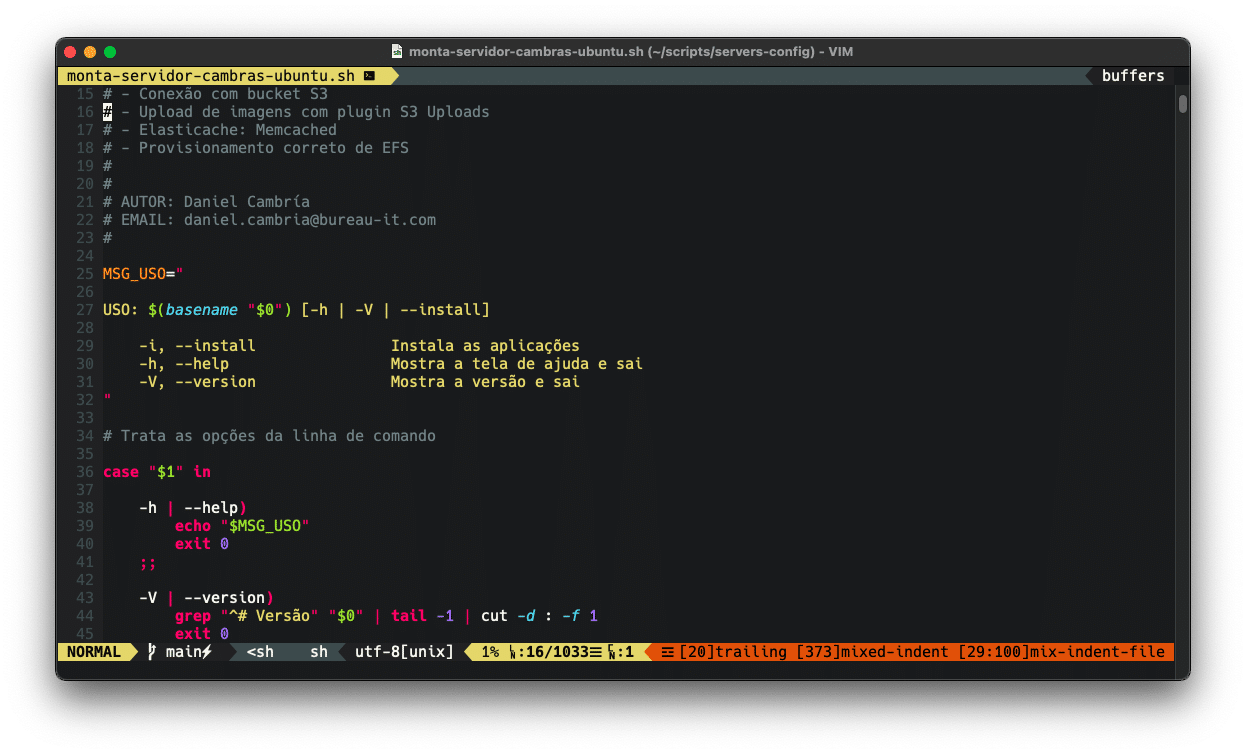
- #Macvim package via homebrew how to
- #Macvim package via homebrew install
- #Macvim package via homebrew update
- #Macvim package via homebrew manual
- #Macvim package via homebrew full
I had a terrible background and the colors were completley off.

If you're on a Mac, you may see something.ugly. Now open up your Terminal (iTerm2 or Terminal app).
#Macvim package via homebrew install
Now that we've added the solarized theme, we need to have Vundle install it.

Simply add the Github repository name in ~/.vimrc: Bundle 'gmarik/vundle' " We saw this beforeīundle 'altercation/vim-colors-solarized' " New line!! Next, we'll add the Solarized color theme. You'll get a confirmation "Done" message on the bottom of your screen if all goes well. Once this is setup, you can open a new instance of vim and run :BundleInstall: $ vim # Any file will do You can install Vundle by cloning it: $ git clone ~/.vim/bundle/vundle Configure VundleĪnd follow the installation directions by editing your ~/.vimrc file: set nocompatible We'll also figure out some issues Mac and Tmux have with showing 256 color themes.
#Macvim package via homebrew how to
Here's how to manage plugins for Vim and use Tmux to boost your productivity, as well as settle a few common issues. Get to know Vim and its many plugins until you build the perfect application for what you do.Setting up your computer for Vim and Tmux often comes with a few issues. When you spend all day in a program, you want every little detail to serve you the best it possibly can.
#Macvim package via homebrew full
There are many other functions for vim-plug, so refer to its project page for the full documentation. Vim-plug has this command to generate a script for restoring all current plugins: :PlugSnapshot ~ /vim-plug.list Once you get the right blend of plugins installed and configured, the last thing you want is to lose track of them. As any Vim user knows, the way Vim works is often unique to each user-in part because of plugins.
#Macvim package via homebrew update
If you don't want to update all plugins, you can update any subset by adding the plugin's name: :PlugUpdate NERDTree Restore pluginsĪnother vim-plug benefit is its export and recovery function. To update all installed plugins, issue this Vim command: :PlugUpdate
#Macvim package via homebrew manual
Update plugins with vim-plugĮditing ~/.vimrc and issuing a command to do the installation probably doesn't seem like much of a savings over the manual install process, but the real benefit to vim-plug is in updates. You can even "install" local plugins outside of your ~/.vim directory.įinally, start Vim and prompt vim-plug to install the plugins listed in ~/.vimrc: :PlugInstall (The NERDTree file manager is used above as an example.) If the plugin you want isn't hosted on GitHub, then you can provide the full URL instead of just the GitHub username and project ID. First, use Git to clone a snapshot of the NERDTree repository:Įach time you want to install a plugin, you must enter the name and location of the plugin between the plug#begin() and plug#end lines. Now you can place Vim plugins in ~/.vim/pack/vendor/start, and they'll automatically load when you launch Vim.įor example, try installing NERDTree, a text-based file manager for Vim. vimrc file, and then it scans all directories in ~/.vim for plugins contained in pack/*/start.īy default, your ~/.vim directory (if you even have one) has no such file structure, so set that up with: $ mkdir -p ~ /.vim /pack /vendor /start When you start Vim, it first processes your. (The examples below use the generic name vendor to indicate that the plugins are obtained from an entity that is not you.) By default, your Vim settings are contained in ~/.vim, so that's where Vim looks for plugins when you launch it.

Install plugins manually (Vim 8 and above)Ī Vim package is a directory containing one or more plugins. You can use a package manager regardless of what version you run (including releases older than 8.x), which makes the install process easier than maintaining updates yourself.īoth the manual and automated methods are worth knowing, so keep reading to learn about both. You may encounter old instructions online or in project README files, but as long as you're running Vim 8 or greater, you should install according to Vim's official plugin install method or with a Vim package manager. As of the Vim 8.x series, however, there's a structure around how plugins are intended to be installed and loaded. Vim is extensible through plugins, but for a long time, there was no official method for installing them. You can customize your theme, and you can add syntax highlighting, code linting, version trackers, and much much more. With the right mix of plugins, you can take control of your life and forge your own unique Vim experience. At least, that's what it would be without plugins, which build upon Vim and add extra features to make it so much more than just a window for typing text. While Vim is fast and efficient, by default, it is but a mere text editor.


 0 kommentar(er)
0 kommentar(er)
